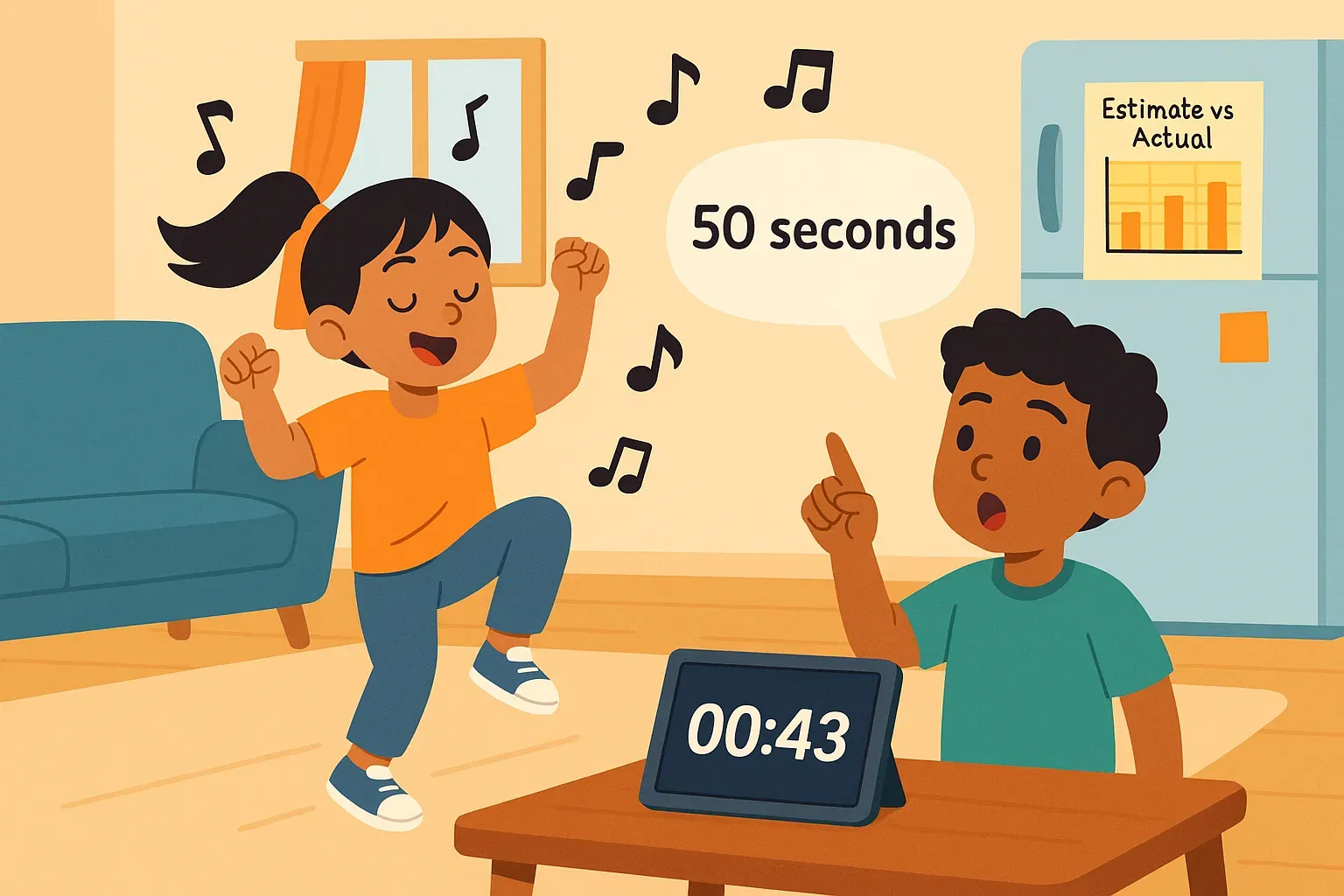Movement-Powered Math: Kinesthetic Games That Teach Place Value & Estimation
TL;DR
Children with ADHD learn math better through movement. Research shows that physical activity improves attention in ADHD children by 48%. Try these evidence-based activities: create a human number line for place value, use jumping jacks for skip counting, and play "Body Base-10" where kids become living place value blocks. Just 20-30 minutes of movement-based math can boost learning and focus. These games work because they engage multiple brain regions simultaneously, helping ADHD brains process and retain mathematical concepts more effectively.
Why Movement Matters for ADHD Brains
If your child with ADHD struggles to sit still during math homework, they're not being difficult—their brain is actually seeking the stimulation it needs to learn. Research shows that physical exercise significantly improves attention, executive function, and motor skills in children with ADHD, with no adverse side effects compared to medication.
The connection between movement and math learning is particularly powerful. Studies on embodied cognition demonstrate that physical actions directly influence mathematical thinking. When children use their bodies to represent numbers and mathematical concepts, they create stronger neural pathways for understanding.
The Science Behind Movement-Based Math
A systematic review found that cardio exercise produces both immediate and long-lasting benefits for ADHD symptoms, particularly for attention and executive function—two critical components for mathematical learning. Additionally, parents report that kinesthetic learning significantly improves academic performance in students with ADHD, enhancing focus, comprehension, retention, and confidence.
For mathematics specifically, embodied learning approaches that combine movement with numerical concepts have been shown to improve both understanding and retention. This is especially true for spatial-numerical associations, which are fundamental to place value and estimation skills.
Kinesthetic Games for Place Value
1. Human Number Line
Materials: Masking tape, number cards
How to play: Create a large number line on the floor using tape. Mark intervals of 10 from 0 to 100. Give your child a two-digit number and have them jump to approximately where it belongs. Research shows that number line estimation strongly predicts mathematical achievement.
Learning boost: Ask them to explain their positioning. "Why did you stand closer to 40 than 50?"

2. Body Base-10
Materials: None needed!
How to play: Assign body movements to place values:
- Jump = hundreds
- Clap = tens
- Stomp = ones
Learning boost: Studies show that synchronized body movements with mathematical concepts improve learning outcomes.
3. Place Value Relay Race
Materials: Index cards with digits, three buckets labeled "Hundreds," "Tens," "Ones"
How to play: Scatter digit cards around the room. Call out a three-digit number. Your child races to collect the correct digits and place them in the appropriate buckets.
Learning boost: The urgency and movement activate the same brain regions that help with focus and decision-making.
Movement Games for Estimation
4. Giant Steps Estimation
Materials: Objects to estimate (beans in jar, books on shelf)
How to play: Place an object across the room. Your child estimates the quantity, then takes that many steps. If they estimate 25 books, they take 25 steps. Discuss if their estimate was reasonable.
Learning boost:Physical movement helps children develop better spatial-numerical understanding.
5. Estimation Dance Party
Materials: Music, timer
How to play: Play music for varying lengths (15 seconds, 45 seconds, 1 minute). Your child dances, then estimates how long the music played. They perform a movement for each 10 seconds they estimate.
Learning boost: Combines temporal estimation with physical activity, engaging multiple cognitive systems.

Implementation Tips for Success
- Timing matters: Research indicates that 20-30 minutes of moderate physical activity optimally primes ADHD brains for learning.
- Consistency is key:Regular physical activity interventions show cumulative benefits over time.
- Match the intensity:Moderate-intensity activities show the best results for improving ADHD symptoms.
- Make it social: When possible, involve siblings or friends. Social interaction adds another beneficial layer to learning.
Neurodivergent Math Learning: Strategies That Actually Work
Frequently Asked Questions
Q: How often should we do these activities?
A: Research suggests 3-4 times per week is optimal, but even once or twice weekly shows benefits. Start with what feels manageable.
Q: Can these activities replace medication?
A: While exercise helps manage ADHD symptoms, it typically complements rather than replaces medication. Consult your child's healthcare provider.
Q: What if my child resists structured activities?
A: Start with their interests. If they love superheroes, create "Super Number Jumps." The key is finding physical activities they enjoy.
Q: How do I know if it's working?
A: Look for improved focus after activities, better number sense during regular math work, and increased confidence with mathematical concepts. Keep a simple log to track progress.
Q: Can these work for children without ADHD?
A: Absolutely! Embodied learning benefits all children, though the impact may be particularly pronounced for those with ADHD.
References
- Chen, Y., et al. (2023). Effect of physical activity on attention in school-age children with ADHD: a systematic review and meta-analysis of randomized controlled trials. Frontiers in Psychology. Link
- Den Heijer, A. E., et al. (2017). Sweat it out? The effects of physical exercise on cognition and behavior in children and adults with ADHD: a systematic literature review. Journal of Neural Transmission. Link
- Deng, X., et al. (2022). Effects of physical exercise on attention deficit and other major symptoms in children with ADHD: A meta-analysis. Psychiatry Research. Link
- Mahan, S., & Matson, J. L. (2021). The Role of Physical Activity in ADHD Management. Children. Link
- Mount, B. (2022). Parents' Perceptions of Kinesthetic Learning and Academic Performance Among Students With Attention Deficit Hyperactivity Disorder. Walden Dissertations and Doctoral Studies. Link
- Pellas, J., et al. (2018). When mathematics meets physical activity in the school-aged child. PLoS One. Link
- Segal, A., et al. (2017). Support of mathematical thinking through embodied cognition. Cognitive Research: Principles and Implications. Link
- Xie, Y., et al. (2021). Effectiveness of Physical Activity Intervention on ADHD Symptoms: A Systematic Review and Meta-Analysis. Frontiers in Psychiatry. Link
- Zhu, M., et al. (2017). Number Line Estimation Predicts Mathematical Skills. Frontiers in Psychology. Link

